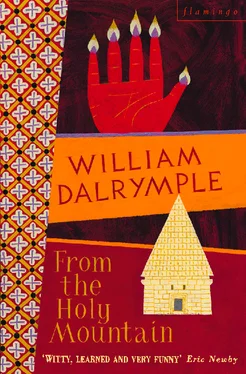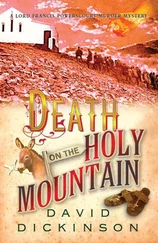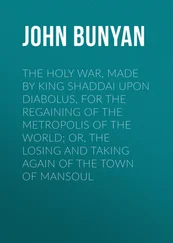I had had my first unforgettable glimpse of the interior of the churches and buildings of Mar Gabriel on the night of my arrival. After our baggage was brought in, the monastery gate was locked and bolted behind us. I ate supper with the monks in their ancient refectory and afterwards drank Turkish coffee in the cool of a raised roof terrace near the Archbishop’s rooms. By nine o’clock the monks were beginning to return to their cells, and Yacoub, a gentle novice of my own age, offered to show me around before I retired for the night.
Yacoub led the way, holding a storm lantern aloft like a figure in a Pre-Raphaelite painting. The electricity supply had failed some time before, a common occurrence, explained my guide, due sometimes to ‘load-shedding’ by the electricity company, and sometimes to the PKK’s irritating habit of blowing up the region’s generating stations. I followed Yacoub down a wide flight of stairs, along a vaulted corridor and into the thick, inky blackness of the crypt. In the flickering light of the lantern, shadows danced along an arcade of arches.
‘This is the Cemetery of the Martyrs,’ said Yacoub. ‘During the Gulf War this was our bomb shelter. On the floor there: see that capping stone? That’s where Mar Gabriel’s arm is buried.’
‘What happened to the rest of him?’ I asked.
‘I’m not entirely sure,’ said Yacoub. ‘In the fifth and sixth centuries our monastery used to fight many battles with the local villagers for the remains of our more saintly fathers. Sometimes monks were killed trying to defend our stock of relics.’
‘And you think maybe the villagers got the rest of Mar Gabriel?’
‘Maybe. Or perhaps one of the monks hid the rest of the body and took the secret of its resting place with him to the grave.’
‘Do the villagers still take an interest in your relics?’ I asked.
‘Certainly,’ said Yacoub. ‘And not just the Christians: we get Muslims and even Yezidis [Devil-propitiators] coming here to pray to our saints. Many of the Muslims in this region are descended from Suriani Christians who converted to Islam centuries ago. They go to the mosque, and listen to the imams – but if ever they are in real trouble they still come here.’
Yacoub bent down with the lantern and pointed to a small aperture below the capping stone of the grave. ‘You see here? This is where the villagers come and take the dust of the saint.’
‘What do they do with it?’
‘It has many uses,’ said Yacoub. ‘They keep it in their houses to get rid of demons, they give it to their animals and their children to keep them healthy during epidemics …’
‘They actually eat the dust?’
‘Of course. It is pure and full of blessings.’
‘What sort of blessings?’
‘If ever they dig a new well, for example, they place some of the dust of the saint in it so that the water will remain pure for ever.’
I told Yacoub that in Istanbul I had seen barren women come to a shrine of St George if they wanted children. Did the same happen here?
‘Mar Gabriel is good for sickness and demons only,’ replied Yacoub. ‘If they want children they go upstairs.’
‘Upstairs?’
‘To the Shrine of St John the Arab. Come, I’ll show you.’
Yacoub led the way out of the crypt. At the top of the stairs, in a niche covered by a close-fitting arch of dark basalt, stood a small plinth, similar to the one downstairs.
‘This is his tomb,’ said Yacoub. ‘Or rather it is the tomb of his torso.’
‘The villagers have been at your bones again?’
‘No. The nuns this time.’
‘The nuns?’
‘Yes,’ said Yacoub. ‘They are in charge of the tomb, and they keep St John’s skull in their quarters.’
‘What on earth do they do with it?’
‘When the local women come, the nuns fill a bowl of water and place it for an hour on the tomb. Then they take St John’s skull and, saying the appropriate prayers, they fill the skull with water, then pour it onto the woman’s head. This makes the lady have a baby.’
‘And people believe all this?’
‘Why not?’ said Yacoub. ‘The nuns think it never fails.’
Yacoub led me out of the shrine into the starlight outside. ‘At the moment, because of the troubles, not so many are coming,’ he said. ‘But before, in the days of peace, there would be long queues every Sunday: people would come from as far as Diyarbakir, especially after they were married. Now of course it is dangerous to travel. Also the Hezbollah are telling the Muslims that they must not come to a Christian shrine.’
We walked over to the main church and Yacoub opened the great door. Amid the herringbone patterns of the brick vaults, the light of the storm lantern picked out the glittering mosaics with an almost magical brilliance. As we drew nearer, the shapes of crosses, vine scrolls and double-handled amphorae glinted in the dancing flame. With Yacoub still holding his lamp aloft, we passed through the sanctuary and into a small side-chapel. In the back wall were two openings, one near the ceiling, the other at shin-height.
‘At the end of his life Mar Gabriel walled himself up behind here,’ said Yacoub. ‘His food was put through that hole at the bottom. If he wanted to take communion he would stick his hand through there at the top.’ Yacoub pointed to the upper hole. ‘Mar Gabriel was a great ascetic,’ he said. ‘Behind that wall he punished his flesh in order to liberate his soul. Come and see what I mean.’
Before I had time to demur, Yacoub had pushed the lamp through the small lower aperture and wriggled in after it. Left in total darkness, I had no option but to follow. Lying flat on my back and pulling in my stomach, I found I could just fit through the hole. Yacoub extended a hand and helped me to my feet.
‘Look here,’ he said, pointing to a narrow slit in the wall. ‘Sometimes our Holy Father Mar Gabriel felt he was not being hard enough on himself, that he was sinking into luxury. So he would squeeze into this slit and spend a month standing up.’
‘Why?’
‘He used to say no slave should sit or lie down in the presence of his master, and that as he was always in the presence of his Lord he should always stand up. At other times, to remind himself of his mortality, he would bury himself in that hole in the corner.’
‘That’s a bit extreme, isn’t it?’
Yacoub was already on the floor, about to wriggle his way back to the church.
‘I don’t understand what you mean,’ he said, before disappearing into the blackness. ‘Mar Gabriel was a very great saint. We should all try to follow his example.’
The day at Mar Gabriel starts at 5.15 with the tolling of the monastery bells, announcing the service of matins. After four days enjoying the monks’ hospitality but sleeping late, I thought I had better make an appearance. So this morning when the bells began to peal, rather than covering my head with the nearest pillow, I rolled out of bed, dressed by the light of a lantern, then picked my way through the empty courtyard towards the echo of monastic chant.
It was still dark, with only a faint glimmer of dawn on the horizon. In the church the lamps were all lit, casting a dim and flickering light over the early Byzantine mosaics of the choir. I kicked off my shoes by the door and stood at the back of the church. To my right four nuns dressed in black skirts and bodices were prostrating themselves on a reed mat. Ahead of me a file of little boys stood in line, listening to an old monk. He had a long patriarchal beard and stood chanting from a huge hand-written codex laid on a stone lectern to the north of the sanctuary. Each phrase rose to a climax, then sank to a low, almost inaudible conclusion.
Slowly the church began to fill up; soon the line of boys stretched right across the length of the nave. Another monk, Abouna Kyriacos, appeared and walked up to the sanctuary. He started chanting at another lectern, parallel but a little to the south of the other, echoing the old monk’s chant: a phrase would be sung by the first monk, then passed over to Kyriacos who would repeat it and send it back again. The chant passed from lectern to lectern, quick-paced syllables of Aramaic slurring into a single elision of sacred song.
Читать дальше












